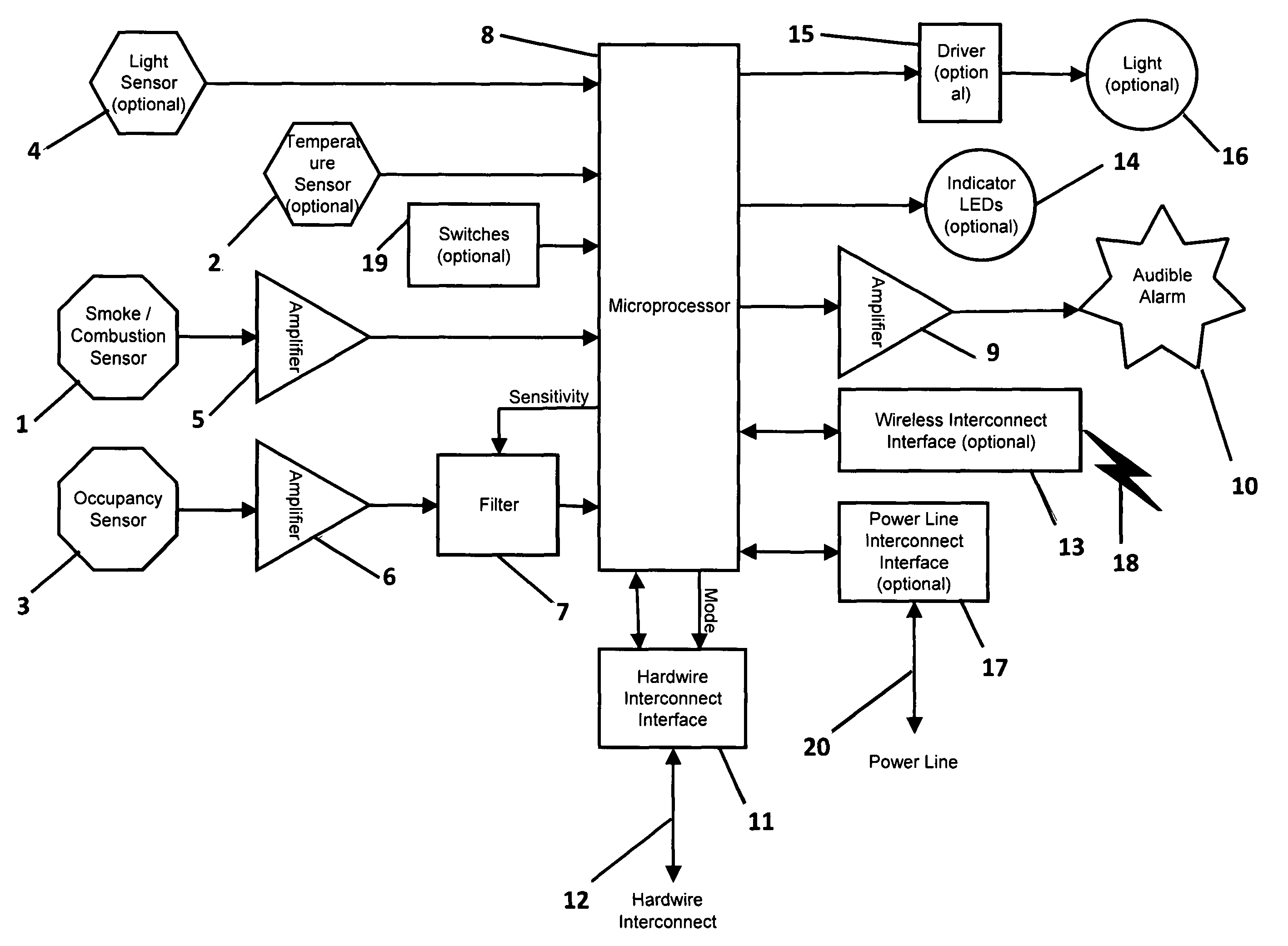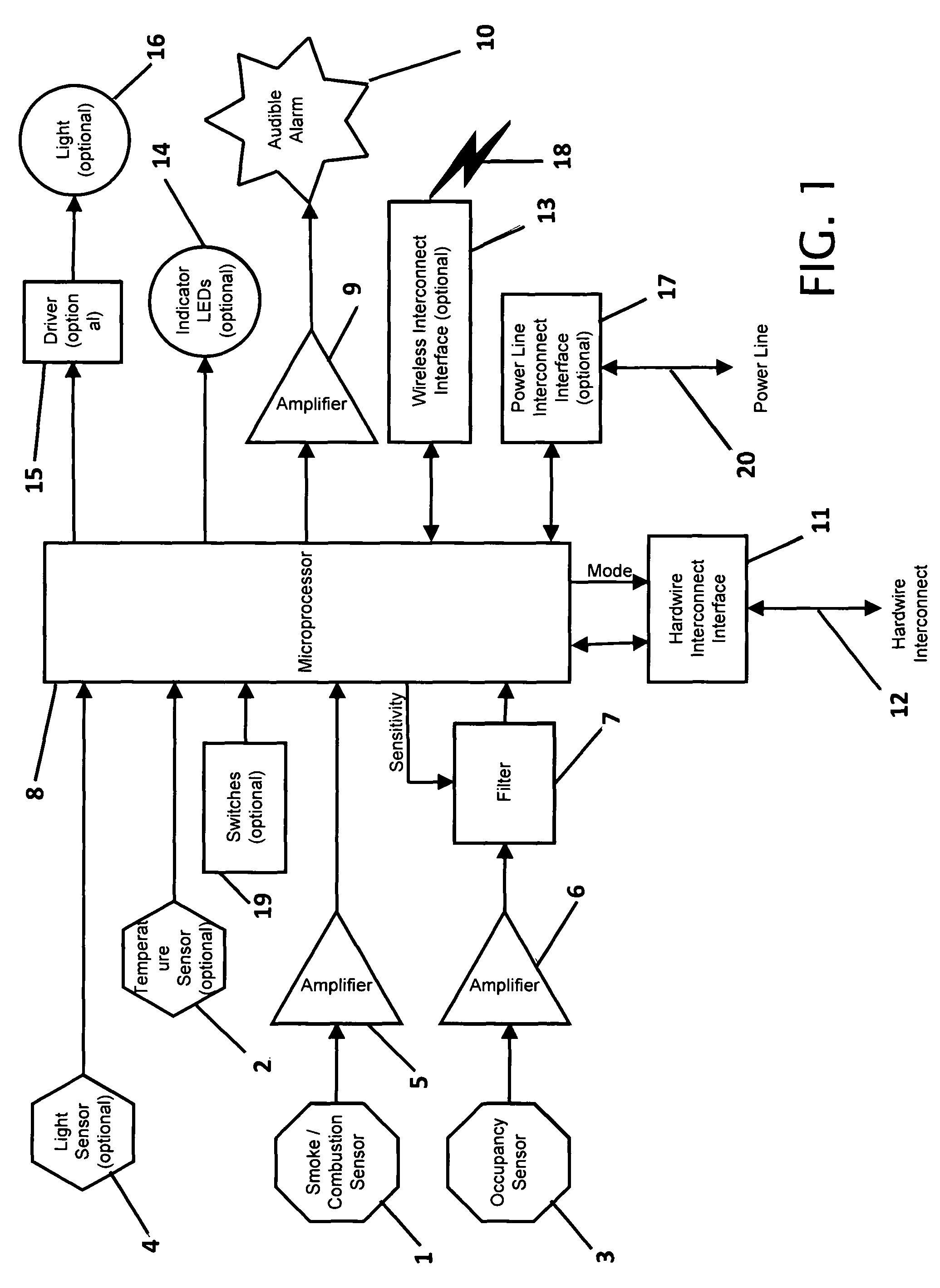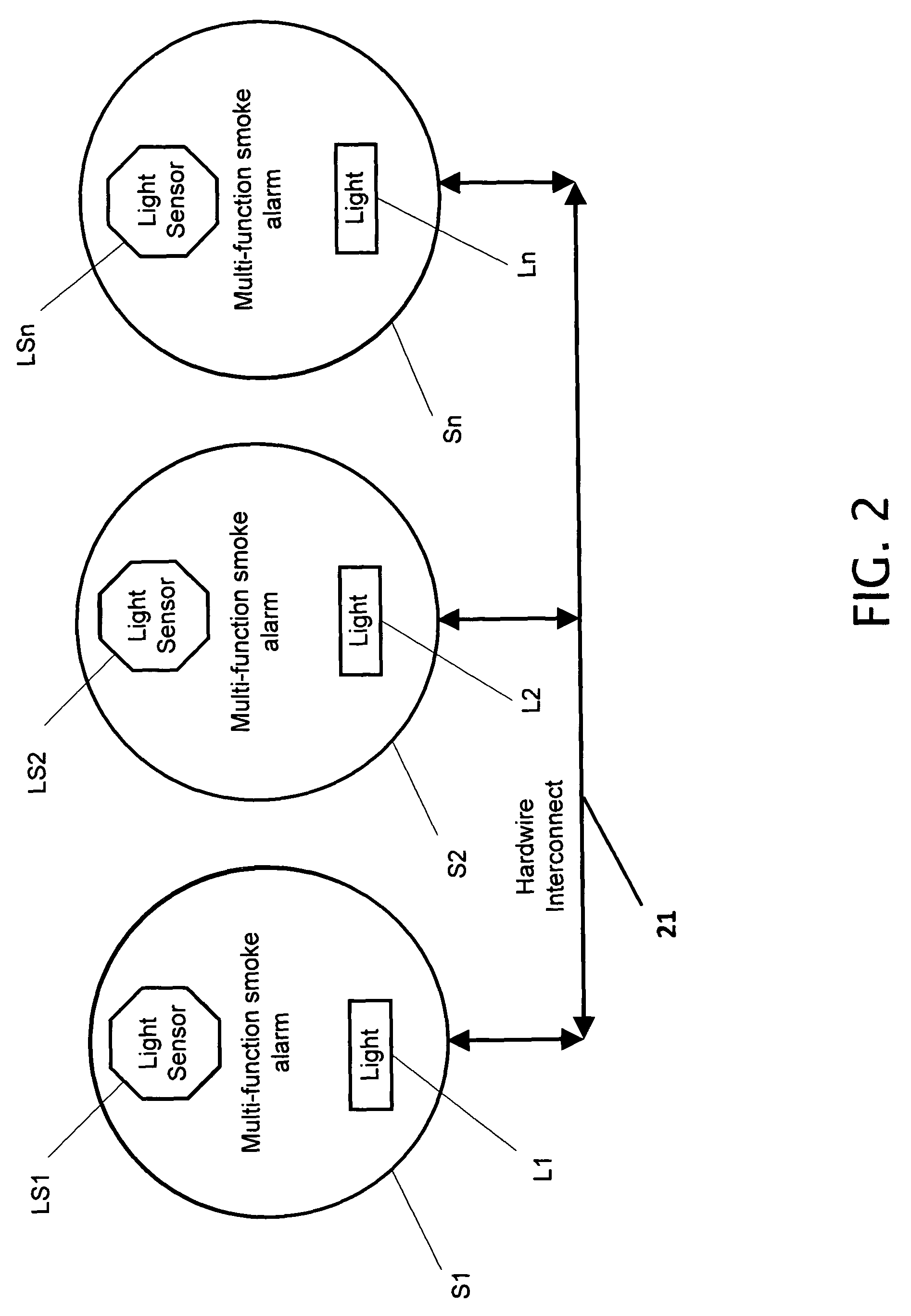Multifunction smoke alarm unit
a multi-functional, smoke alarm technology, applied in fire alarms, fire alarm smoke/gas actuation, instruments, etc., to achieve the effect of improving reliability, simplifying installation, and reducing costs
- Summary
- Abstract
- Description
- Claims
- Application Information
AI Technical Summary
Benefits of technology
Problems solved by technology
Method used
Image
Examples
Embodiment Construction
[0024]FIG. 1 shows a block diagram of a possible implementation of the present invention. The multifunction smoke alarm unit can be embodied in different forms. This exemplifies the principles of the multifunction smoke alarm unit, and is not intended to limit the multifunction smoke alarm unit to the specific embodiment illustrated.
[0025]Microprocessor 8 contains a suitable control program and software routines which may be needed to implement the functions described here. There may be different versions of the control program, depending upon the desired functionality. In this embodiment, Microprocessor 8 contains internal volatile and non-volatile memory, I / O ports, and any other hardware needed in order to execute a suitable program. Suitable microprocessor hardware and software techniques are well known and components are widely available.
[0026]Smoke sensor 1 detects the presence of an anomaly such as combustion or smoke by one of various methods, such as ionization, particle, o...
PUM
 Login to View More
Login to View More Abstract
Description
Claims
Application Information
 Login to View More
Login to View More - R&D
- Intellectual Property
- Life Sciences
- Materials
- Tech Scout
- Unparalleled Data Quality
- Higher Quality Content
- 60% Fewer Hallucinations
Browse by: Latest US Patents, China's latest patents, Technical Efficacy Thesaurus, Application Domain, Technology Topic, Popular Technical Reports.
© 2025 PatSnap. All rights reserved.Legal|Privacy policy|Modern Slavery Act Transparency Statement|Sitemap|About US| Contact US: help@patsnap.com



